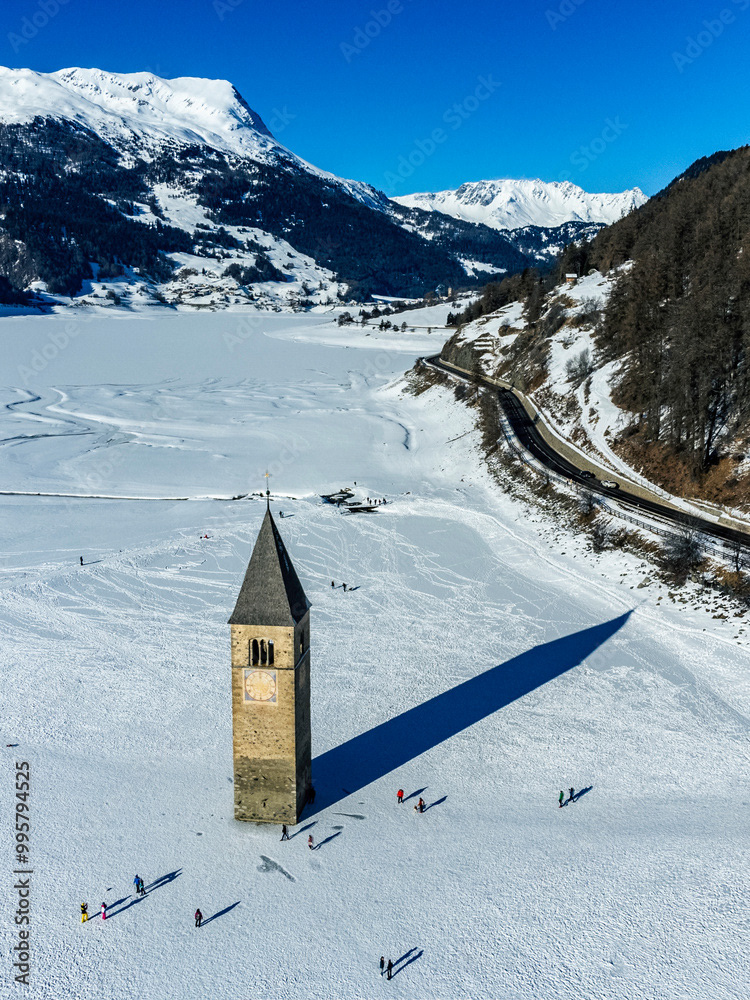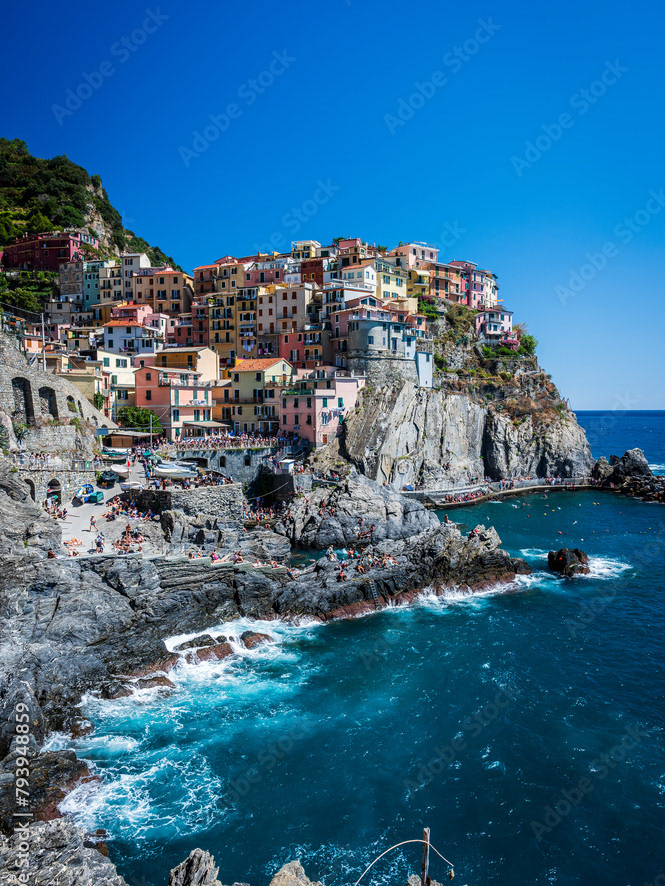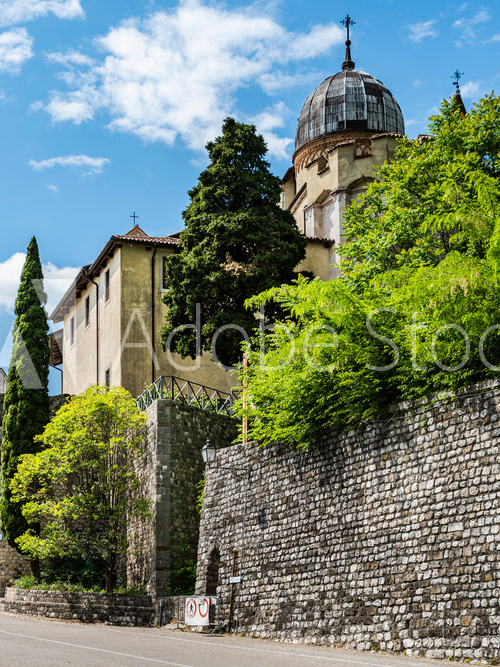San Pietro in Carnia
Between the 4th and 5th century, in the southern half of the Roman settlement two Proto-Christian basilicas were erected, most likely at the same time of the institution of the Diocese by the Aquileiese Bishop Cromazio (388-408). Remnants of a third basilica – perhaps built at the end of the 5th century – have been uncovered recently inside the church. In 1312, the Patriarch of Aquileia, Ottobono, contributed to the construction of the actual gothic church, with a single nave and three altars; of the previous building only the sacristy was maintained. This work was realized by incorporating the northern wall with the Roman windows that are visible to this day; care was taken also to save the Roman ‘bifora’ (double mullioned window), still existing (above, see another image of the church from an interesting angle). At the end of the 14th century, and until the first years of the 1500s, important renovations were undertaken: the main intervention was the addition of a nave to the south, designed following the canon of the previous gothic building; a pulpit was also created with a staircase that allowed to climb to the upper sacristy, which was being constructed at the time. In the newly refurbished church there were four altars and a baptistery; then, at the beginning of the 1700s, further alterations were carried out. As a result, the church – with all the superstructures of the 1500s, 1600s and 1700s – has become the asymmetrical complex that we admire today, quite interesting from an architectural point of view.





























